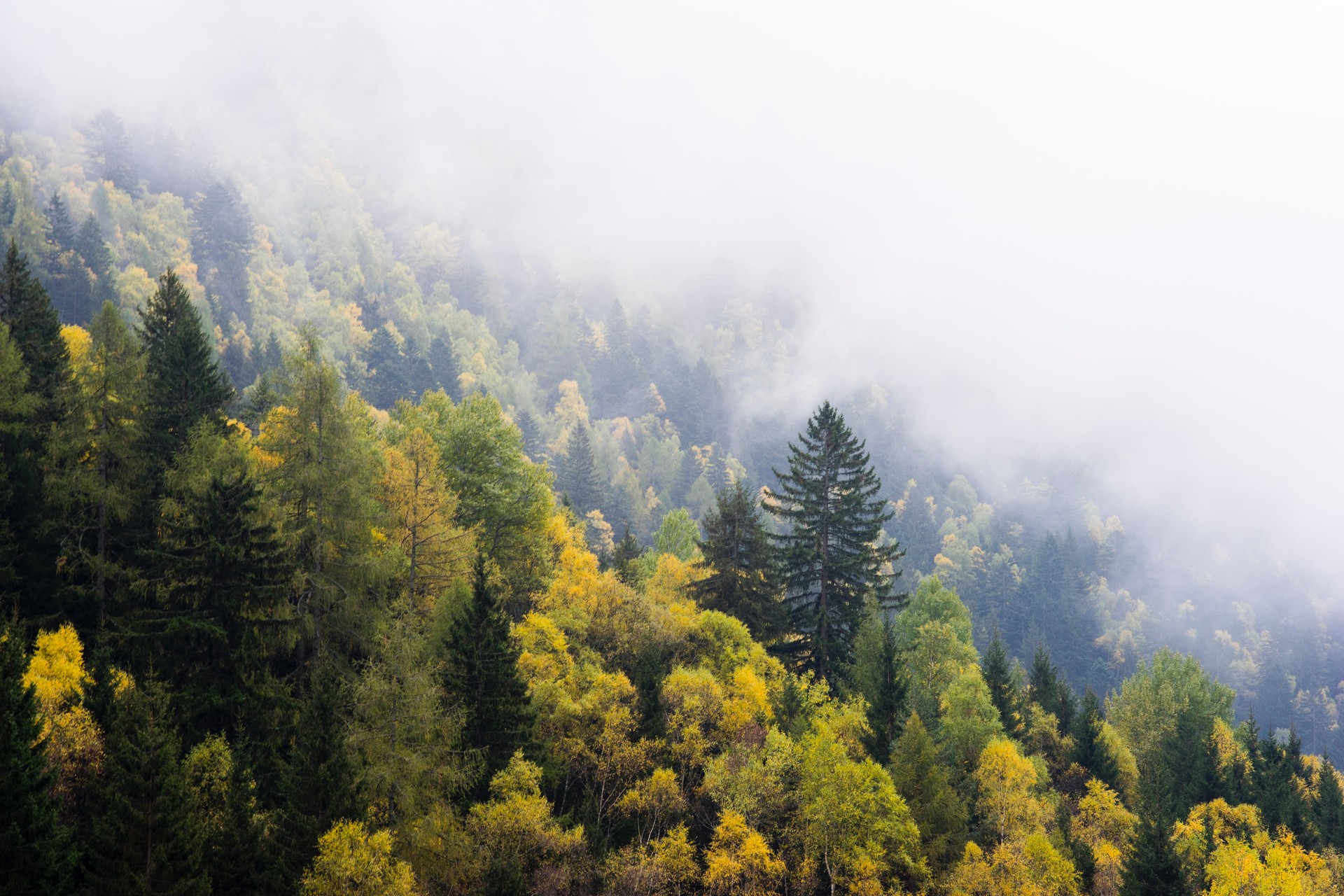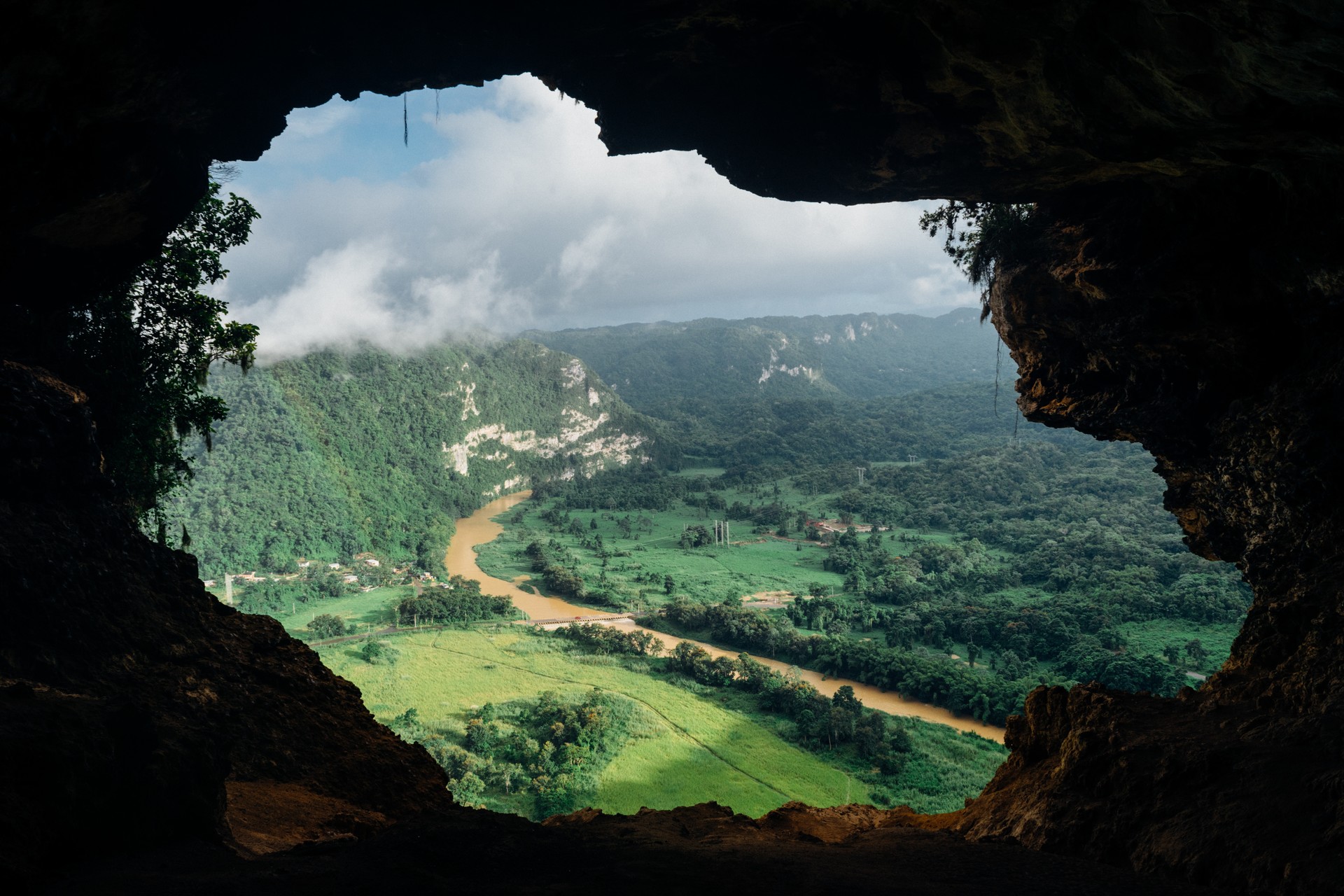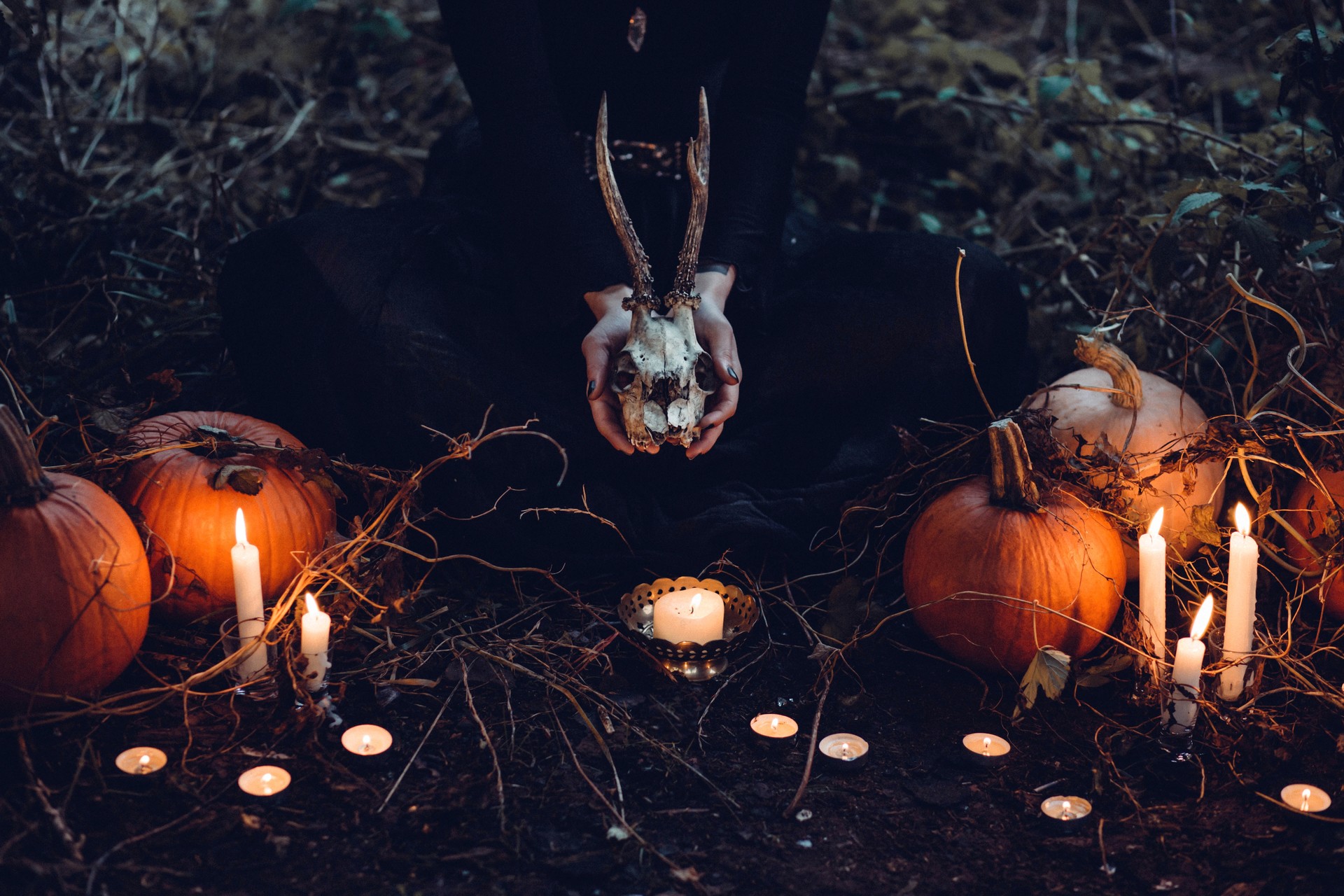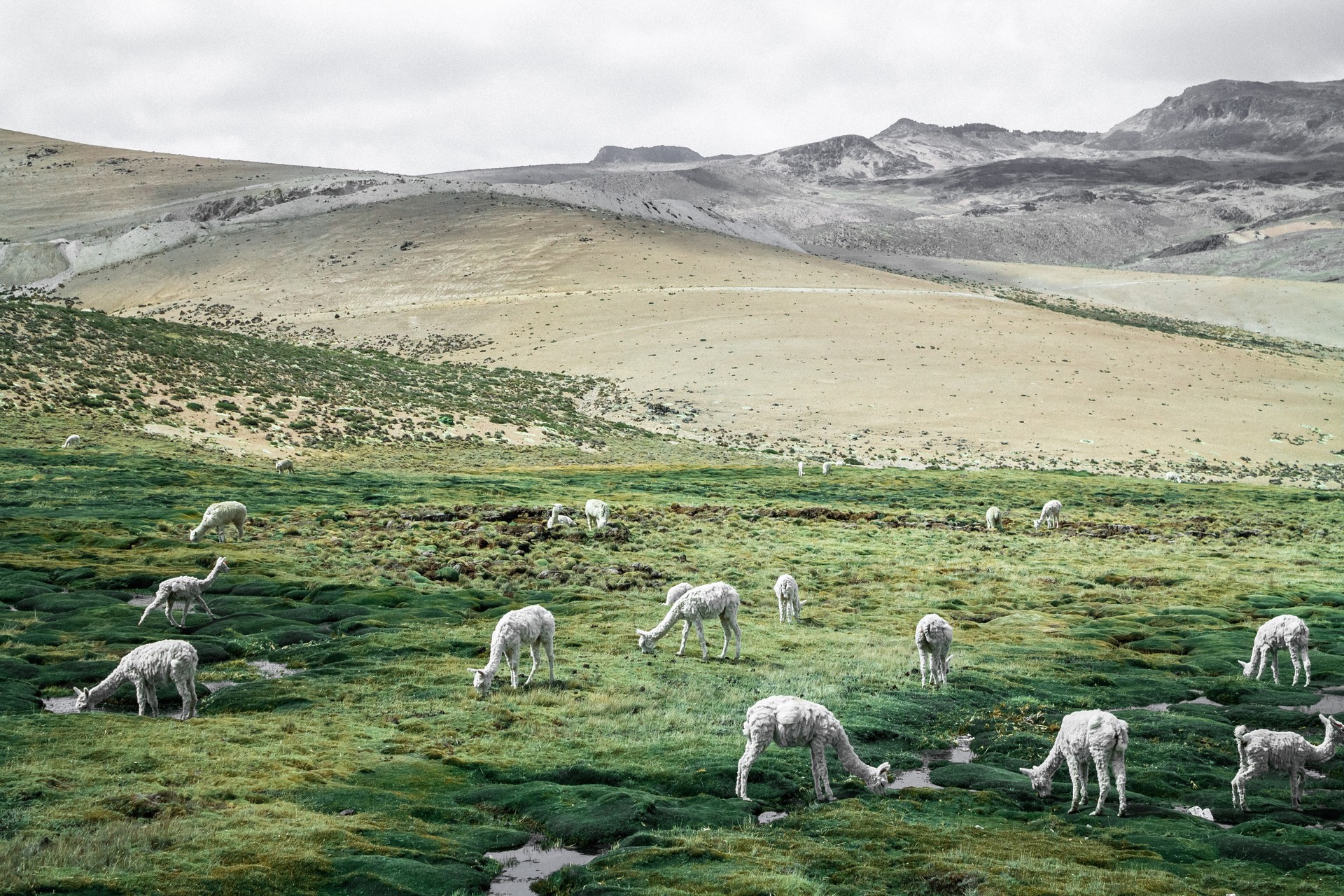Basque Mythology
Basque mythology, considered one of the richest of Europe, gathers together the myths and legends of the whole of Euskal Herria. (The Basque Country, Navarra and the French Basque Country) from before Christianity. It is a matriarchal mythology, having a woman as the main God, Mari, which is a rare occurrence.
The legends of this mythology have given rise to diverse magical places where it is believed that magical beings live, have been the site of Akelarres (Witches' Sabbath), or have hosted inexplicable events.
In this post, I will tell you about the main figures of Basque mythology since it's quite interesting for either those lovers of mythology or those that go on Erasmus in any part of Euskal Herria (Basque Country) who want to know a bit more about the culture.
Amalur
Amalur (Mother Earth in English) is a basque goddess superior to all others; she represents the Earth and she makes it possible to live on it. She is the one who grants us the food and shelter to survive. Faith in this being dates back to the time before the invasion of the Indo-European peoples, which implies that the belief is very old.
Legends exist that talk of incredible treasures within the Earth's interior that humans keep trying to steal. Therefore, it is a tradition to leave offerings to Amalur in Basque caves and chasms since it is said that these are the gates to the Earth's interior.

Mari
Mari or Maddi is the main Goddess of Basque mythology and epiphany of Amalur and the other beings are inferior to her. She lives in the mountains of the Basque Country, although the most famous and best known mountain is the Anboto (Amboto, in Castillian), hence she is known on many occassions as "Anbotoko Mari" (Mari of Anboto).
Mari is the feminine personification of Mother Earth and because of this she represents the Queen of nature and everything related to it. That's why she manipulates the change to the climate, which can be beneficial or harmful, and among her endeavours you'd find punishing lies, theft and pride. As we can see, functions converge in her figure that appear dispersed or distributed among different Genie or deities in other mythologies.
Atmospheric changes occur depending on where this female divinity is found; and despite Anboto being her main dwelling place, as we already mentioned, she can reside in any of the caves in the Basque mountains. It is believed that when Mari is in Anboto there is mass rainfall; when she is in Aloña, however, there is prolonged drought and when she resides in Supelaur (Gorbea, Orozco), a bountiful harvest is reaped.
Normally she is represented with the body and face of a woman with long blonde hair which she combs with a golden comb in the sunlight, however it isn't unusual to see her in a hybrid form of a tree or a woman with goat's or vulture's feet. She has also been represented as a woman of fire, a rainbow or a horse that drives the clouds. She usually dresses very elegantly, almost always with green dresses.
Her partner is Sugaar or Maju and her children are Mikelatz (wicked child) and Atarrabi (gracious child), who represent good and bad.
The origin of Mari is not exactly known and different legends exist on the matter; some are pure legends and others, on the other hand, are mixed up with history. Below I'll tell you the legend that I've always been told, and that therefore, I believe:
Many years ago there was a family that wished with all their might for a child, but they were never able to conceive. For that reason, the young woman invoked the devil and begged him to get pregnant. The devil's condition was that he would take the child when it reached the age of twenty; the woman, despite this condition, accepted the deal. From the pregnancy a beautiful baby girl was born and was raised lovingly. When she was about to turn twenty, the woman locked her up in a glass box so that the devil would not be able to take her. Her efforts were in vain, as since then Mari lives in the mountains of the Basque Country.
Eguzkilore
A legend that is related to this Goddess is that of the flower Eguzkilore; and legend has it that people greatly feared Gaueko, the God of darkness, who ate shepherds and their flocks. It was for this reason that they asked the Basque goddess Amalur for help (Mother Earth). She blessed them with the light of her first daughter, Ilargi (Moon), but her light was not enough, and therefore, she blessed them with her second daughter, Eguzki (Sun). However, the night was still dangerous, and finally Amalur blessed with her protection any house that had an Eguzkilore on their door. That way, if any evil spirit wanted to enter the house, they would have to stop to count the innumerable hairs of the flower, and day would come way before the spirit finished counting.
Sugaar
The Genie Sugaar is an enormous and terrible male snake that lives in the depths of the Earth and comes to the surface through chasms or caves. In Azkoitia (Gipuzkoa) he is considered the husband of Mari, the Basque Country Goddess, and on Fridays when the two get together, there are immense storms. in Betelu (Nafarroa) he is considered a malignant devil. In Ataun (Gipuzkoa) they say that when children don't obey their parents, Sugaar imposes terrible punishments. In some places he has been spotted shooting across the sky like a bolt, with his head and tail burning.
This mythological figure is similar to Herensuge, but Sugaar is much older. It seems that while Sugaar lost strength in popular beliefs, Herensuge was gaining it, since the mentions of Sugaar survive in isolated places where there are no references to the new deity.
Lamia
This female mythological being lived in Basque caves, ponds or rivers and men would fall in love with them as they would with the men. They helped farmers in their labours and even helped when constructing bridges or castles. However, their behaviour was not all positive since on occasion they kidnapped men and if they refused to help them, they would do evil.
The perception of the Lamias is not entirely secure because depending on the fable, they behaved one way or another. Some point to them being superior beings to humans and therefore, in their honour, humans should make all types of sacrifices; others, on the other hand, affirm that they can be manipulated through objects or amulets.
They are represented as beautiful women with duck's feet, and are characterised by brushing their long hair with golden combs. Among their tasks, we find weaving with wheel and spindle, building roundhouses, bridges and houses, and washing clothes at night.
Among their favourite foods, we find bread, bacon (they are big lovers of fats) and cider, foods that they ask of people after having helped them. Lovers, on the other hand, present them with bread, curd and milk.
They are great defenders of honesty and against fraud and therefore collect undeclared taxes from farmers.
As a curiosity, when a lamia is dying it needs to be seen first by a human and recite a prayer before them. Otherwise, it cannot die. So, when one is dying, it will claim a person.
Galtzagorriak
Galtzagorriak (Red Pants, in Castillian) are tiny male mythological beings that dress, as their own name indicates, in red trousers. They are characterised by being skilful, lively, playful, helpers and very hard workers. Their owner keeps them in a pincushion or a small box and they always need to complete the orders of their superior, whatever they are.
Each time the owner opens the pincushion or the small box, they jump to his head, beginning to circle around it and they continuously ask him what the job is that they should do. They work at night and when the first light of sun rises, they have already finished their job.
To obtain these pixies, what you need to do is the following: on the eve of midsummer, you should leave a pincushion or small box on top of a bush and when the sun rises, the galtzagorri will have entered it.
They also say that when seers, witches or healers do something incredible, these tiny beings have been behind it.
Iratxo
Nowadays the term makes reference to goblins in general, but what's certain is that the old Biscayan legends used it for a mythological figure in particular. Iratxo is a mischievous genie but not even who appears at night and frightens people. If someone followed him, it would lead them over ravines, cliffs and other dangerous places. They usually live in caverns and wells.
It is also a great defender of honesty since we have the saying: "ill-gotten gains, are squeezed out by Iratxo".
Mostly they are represented in human form, but they can adopt the form of animals like for example: a donkey, a black ram or a firebird.
Sorgina
The sorginas, in other words, Basque witches, were women who knew the secrets of procreation and birth, and because of this, they performed the role of midwives. Also, they were experts of herbalism and the medicinal use of plants, for which we can also define them as healers. Furthermore, thanks to their connection to the spiritual world, they frequently acted as counsellors, oracles and priestesses.
They are malignant beings that are under the devil's orders known in the Basque region as "Akerbeltz" (Black goat in Castilian). They are characterised by possessing superhuman powers and malignant tendencies and on occasion they have been accused of destroying harvests, breaking down mills and ironworks, of making people ill or even killing them, sinking ships and much more.
They participate in nightly meetings, called akelarre, where they cast jinxes and curses. The name of akelarre (meadow of the goat) comes from the meadow of the same name, in Zagarramurdi (Navarra), where these same meetings are held. In this type of meetings they worship Aker and drink herb potions. In the covens they dance to music intoxicated and have orgies. The happiness and enjoyment, characteristic of the lives lead by these women, formed part of many of these celebrations and this was something that the Christian Inquisition took charge of destroying. Hence, countless cases of "witches" are known in Basque Country.
There isn't one unique way of becoming a witch; and a person can become a sorgina for having walked around a church three times, for not having been baptised, for having inherited clothes from a sorgina, having had some type of contact with them etc.
One of the most famous powers of the sorgina is the power to fly; this is acquired by rubbing oneself with an ointment reciting the following phrase: "sasi guztien gainetik eta hodei guztien azpitik" (above all the brambles and below the clouds).
Akerbeltz
As we mentioned previously, this genie takes the form of a black billy goat, as the name indicates (aker, male goat and beltz, black). However, it doesn't always show its malignant side; when it shows its good, it acquires characteristics similar to the great Goddess Mari, becoming the boss of other genie.
The legend goes that Akerbeltz protects all animals that are under his care, and even that he has superhuman powers that allow him to cure sicknesses that they may have. In fact, here originates the tradition to keep a billy goat, essentially a black one, in farm or homesteads, to protect the domestic animals that are raised there.
Like many Basque cults, everything points to the fact that it originates a long time ago; or at least this is what is demonstrated with the roman inscriptions from the 3rd century found in Aquitaine with the word "Aherbelste", which according to linguistic experts, is directly related to this genie. In this inscription, reference is made to a god that was adored in this period, the god that leads and protects other beings. This same god could be the genie that the Sorginak 'witches' worshiped during the XVI-XVII centuries.
As we've seen already, Akerbeltz or Aker leads witches meetings, the akelarres, and it is in this same moment where he shows his dark side. These celebrations took place every Monday, Wednesday and Friday. In them, they worshiped this being who led the insurrection against religion and the established order, in this way, defending the old beliefs related with spirituality of nature. In other words, this only confirms what we already knew: that the witch hunt that the Inquisition carried out during the XVI-XVII centuries was a repression of a populace, or rather against a group of people, that positioned themselves in support of the ancient traditions and spiritual beliefs.
Gaueko
It's name literally means "that of the night" and as you can guess, it is the genie of the night, or the personification of it. In fact, an ancestral saying tells us "the day for those of the day, and the night for those of the night": which means, the day is for people and the night is for the spirits of the night. The house is like a temple, where people feel protected, but the night is of the spirits and they don't allow people to carry out certain tasks during the night, in fact they will fall into its clutches.
It punishes, above all, those who ridicule spirits, trying to act brave in the darkness of the night. In some cases it lets its presence be known through a gust of wind whilst the phrase that we cited earlier is uttered: "the night for Guaeko, the day for those of the day".
Eate
Eate, Egate, Ereeta or Orots is the genie of the storm, of fire, the great floods and hurricanes. When one of these phenomena is approaching, his strong voice can be heard advising us of the coming disasters. However, this genie is not known throughout all the Basque Country; the legends are only known in the area of Goiherri, Azpeitia in Guipuzcoa, and in Arakil in Navarra.
The name "eate" seems to come from "errete" (fire) in Basque, for what may originally have been the genie of fire. When there is a foorest fire or a building is burnt, the billowing flames represent the locks of his beard which raise up to the stormy heavens where he lives.
Aideko
Aideko, Aide, Aidetikako or Aidegaxto is the genie of wind and because of this the Castilian translation of his name would be "el del viento/the Wind one". It comes from the air, from a world we do not know, supernatural. This genie usually is a negative genie that hinders human actions, but there can be situations in which he acts in our favour.
He is considered responsable for all illnesses and misfortunes whose cause is unknown; therefore, if we don't know the origin of an illness, Aideko is probably behind it.
This mythological being is included in numerous legends all over the Basque region, like for example in Zerain and Zegaman (Guipúzcoa), where it is said that it was he himself who brought cholera in the mid-nineteenth century in the form of a low cloud, or in the province of Labort (French Basque Country), where it is believed that Aidegaxto, the evil form of Aideko, creates and directs storms. As occurs with other figures, he is known throughout Pirineo and the north of the Peninsula under different names.
In order to act against the influence of this supernatural force, you have to make use of magic and prayer given that natural methods have no effect against him.
Herensuge
The name Herensuge literally means, dragon in Basque. It is known by other names too, like Lerensuge, Errensuge, Herainsuge, Ersuge, Sierpe, Dragoi etc.
It is very well known throughout all of the Basque Country given that it appears in innumerable legends in: Sara, Zugarramurdi, Donibane-Lohizune, Ezpeleta (Labort), Errenteri, Zaldibia, Ataun (Guipuzcoa), Zubiri (Navarra), Lekeitio (Bizcaya), Uhart-Mixe (Baja Navarra), Camou (Sola) and in many others.
It is an evil genie that appears in the form of a great snake, on occasion with up to seven heads, and for this reason the second part of his name, suge, means snake. It lives in caves and only comes out to satiate its hunger. Some tales say his favourite food is domestic animals that graze nearby his cave whom he draws in with his breath. According to others, on the other hand, he lives off human flesh, and many of the legends mention that he demands in the villages around him that they provide him with a person from time to time to satisfy his hunger, so that he can calm himself and the population, at least for a while.
Basajaun
Basajaun literally means, "the lord of the woods". who is the master of all the forests in the Basque Country. He usually lives in the deepest part of the forrest, you'll find him in the caverns. He is represented by an enormous human body, covered in great quantities of hair. He has a large mane that almost reaches his knees, causing it to cover all his face, chest and stomach. Incidentally, he only has one human foot, the other foot is a hoof with a circular sole.
Basajaun is the protector of the forest and of nature, and especially of herds. It is for this reason that when a storm is close or wolves are nearby, he warns the shepherds through howls so that they can save their flocks.
Sheep can detect when this being is close, when they do so, they start ringing their respective cowbells and this way the shepherds can relax because they know that the flock will be protected from any evil.
However, on many occasions, he is also represented as a terrifying being of evil character, with great strength and agility. Other times, on the other hand, he is represented as the first farmer, the first blacksmith or the first miller. What is certain is that he is an expert in all these trades and that man, taking advantage of him, stole the secret of making the saw, the mill shaft and the technique for welding metals.
Tartalo
Tartalo is a cyclops or malignant genie with only one eye that principally dedicates itself to shepherding. There has always been great fear towards this being and this is understandable, given that it is anthropophagous and therefore, kidnaps young people from the village to then eat them.
This figure probably derives from classic Greco-Roman mythology, transforming the place "Tartaro" in the terrible genie that we know today.
Jentil
The jentiles were habitants of the Basque lands way before the arrival of christianity; when this was introduced in Basque country, they went to live in remote places away from the religious population. They lived isolated form civilisation but never had problems with christians, they lived together in peace.
The name "gentile" comes from the latin word "gentil", which means non-believer; in fact, gentile is how they referred to non-believers in general.
They were gigantic and very wild men that possessed a strength beyond that which was normal; this endowed them with the ability to throw enormous rocks great distances. In fact, in-numerous boulders exist with the name 'Jentilarri (Jentil rock), for example, in Arrankudiaga (Vizcaya), in Mutriku (Guipúzcoa), in Azkoitia (Guipúzcoa), in Aralar (between Guipúzcoa and Navarra).
They also attribute the construction of countless prehistoric tombs and monuments throughout all of the Basque Country to them and they are considered the creators of megalithic monuments in general. Just like Basajaun, they have been considered on different occasions as the first miners, blacksmiths and millers, and also the first to grow wheat.
Maide
Maide, maindi, mairi, mairu or intxitxu are mythological figures that, like the jentiles, represent the primitive Basque non-believers, before christianity. In Donibane Garazi (Saint-Jean-Pied-de-Port), Baja Navarra, they call any person who isn't a believer, not baptised or of Arabic origin "mairu".
They are nocturnal beings that enter houses through the chimney. They have a human appearance and sometimes they are presented as colleagues of the already mentioned lamias. Among their activities is the construction of monuments.
A desiccated arm or arm bone is attributed with mysterious virtues: in one legend of Saint-Jean-Pied-de-Port, the bones of a dead unbaptised child, of a non-christian child are called Mairu-beso (Arm of Mairu), and is used as a torch for night lighting and serves to lull the inhabitants of the house to sleep.
Olentzero
It could be that this name sounds familiar, given that it would be the equivalent of Father Christmas of Basque Country. Originally, it seems that the name Olentzero was given to a time of the year and later gave name to the mythological character. Further on, we will see, but the image that we have of this figure nowadays has nothing to do with that from centuries ago:
In many areas of Guipúzcoa and in the North-east of Navarra, Olentzero was the name given to a distinctive coal-man that lived in a mountain hut. On Christmas Eve, when the inhabitants of the house went to sleep, he would enter through the chimney to warm himself up, and because of this, the chimney had to be spotless on this day. In some villages on that day they would take out a doll made of straw and rags, and burn it in the square. In other places, a young man dressed up as a charcoal burner and groups of young people would go out to beg in the village.
Both the logs that are burnt in the chimney and the doll that is burnt in the Square on Christmas Eve are related to fire, and like the bonfire of San Juan, ultimately, appear to be behind the Pagan celebrations of the Solstice. And it must be remembered that the Basque people lived for a very long time isolated and have always been very close to nature, and therefore very close to all the elements that make it up. But this mythological figure has been adapted to the christian traditions, and like the song says: "Olentzaro comes on Christmas Eve with the Good News, baby Jesus has been born".
Many legends and traditions about this figure exist, the majority are quite frightening. In Leiza, Olentzero was very well received, given that it was him who made sure that houses had bread. Because of that, in this village, on the night of the 24th, on the facades of the house they put a straw doll that represents Olentzero. Reportedly, in Baraibar, on Christmas Eve, the figure makes charcoal in the charcoal pit on a nearby mountain. In Elduaien the little boys and girls roast chestnuts to scare away the figure with the sound of the danbolin (percussion instrument), given that he usually enters houses through the chimney on that night, and if the chimney is not clean, he kills all the inhabitants with the sickle he carries. In Berroplano two days before the end of the year they would say: "Ez zaitezte kalera irten, bihar, urteak egunak hainbat begi dituen gizon bat etorriko baita", which means, "tomorrow you won't leave the house, because someone will come with as many eyes as there are days in the year". In Areso they would scare the young children saying that they shouldn't leave their houses on that day because Olentzero would come with a sickle to cut their necks. In Oiartzun and bidasoa he is seen as a good figure, but they were told to be careful as he was drunk and dirty with coal.
Nowadays, on the other hand, and maybe at the interest of big companies, Olentzero is the good-natured charcoal burner who brings children and adults Christmas Eve presents. During the rest of the year he lives in his hut making coal, and when Christmas arrives, carrying a sack filled with gifts and together with his donkey, he goes from house to house delivering happiness. He beings presents to those who have behaved well during the year, and coal to those who haven't. This tradition of bringing gifts started between the 70s and 80s of the 20th Century, so that Basque children would have an local character to look forward to on Christmas Eve.
As with other Christmas characters, in towns and cities a kind of "baserri" (farmhouse) is usually organised where "Olentzero" is to be found and where the children go to ask him for the presents they want.
Mari Domingi
Mari Domingi is a figure of Basque mythology and, like Olentzero, is celebrated during Christmas celebrations, although you probably won't have heard much about her. She represents femininity, the arrival of Winter and the birth of a new year. This is owed to the fact that Basque people heavily considered the influence of the Sun, Moon and the stars and lived in connection with the Earth. They felt close to nature, they respected it and lived in harmony. Basque ancestors celebrated rituals and carried out traditions to bid farewell to the old Sun, to the shorter days, and welcomed the new Sun, and the arrival of longer days.
Mari Domingi is a shepherdess (representing a 'good Basque woman') and also dedicated herself to the cultivation of the Earth. She knows the course of the sun and the phases of the moon very well, as well as the use of different medicinal plants, just like the aforementioned sorginak or Basque witches. She has an apple orchard near her hut, so she doesn't hesitate to pick them and prepare one of her favourite dishes: baked apples. Olentzero and Mari Domingi had a great friendship and for this reason they both live in the mountain and their huts are very close to one another. They help each other out, each contributing what he or she knows and what he or she has. In the past, on the Winter Solstice, they shared out coal from house to house to help the people of the villages facing the cold and harsh Winter. Nowadays, because needs have changed, they come during the same period to share toys with the boys and girls of the Basque region, many of whom make these toys at home because they are very skilled woodworkers.
These are the main Basque mythological figures; I hope it has been of interest to you and has helped you to know more about the Basque culture.
Photo gallery
Content available in other languages
- Español: MITOLOGÍA VASCA
- Italiano: Mitologia basca
Want to have your own Erasmus blog?
If you are experiencing living abroad, you're an avid traveller or want to promote the city where you live... create your own blog and share your adventures!
I want to create my Erasmus blog! →













Comments (1 comments)
Can you explain what the difference is between the domains of Mari and Amalur? As I understand it they both represent a kind of mother earth type figure that grants prosperity and good harvest.